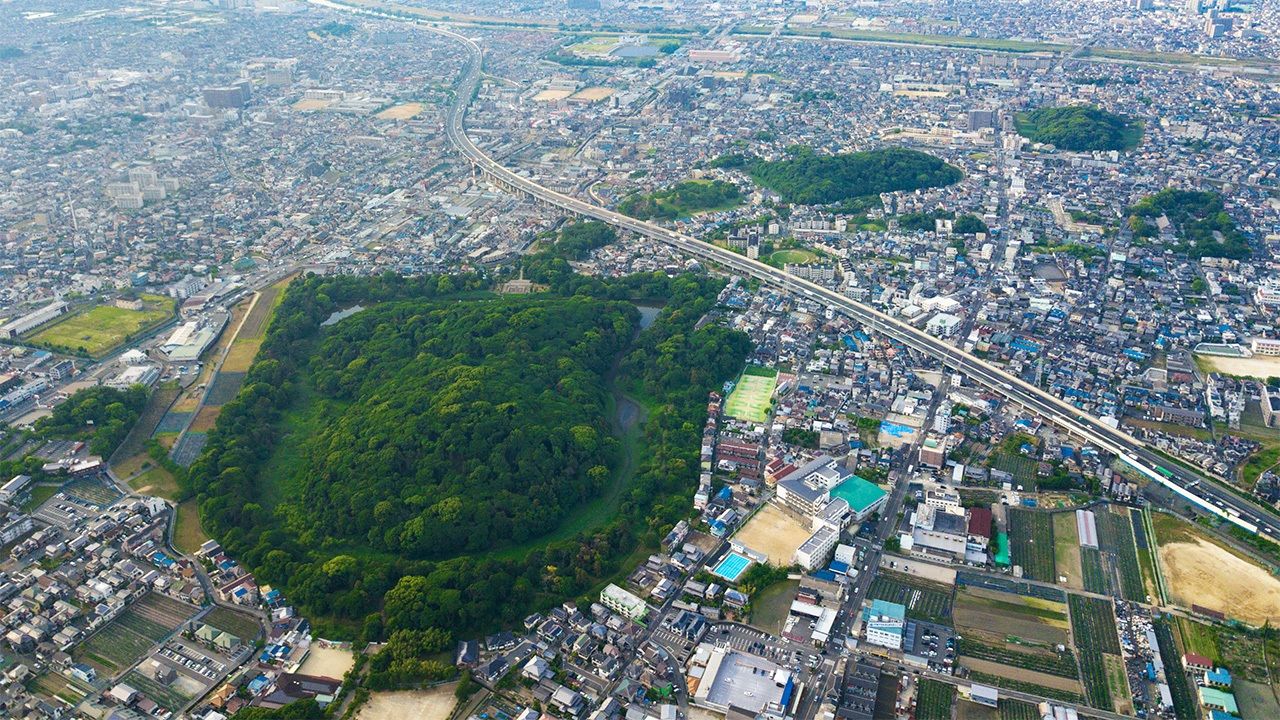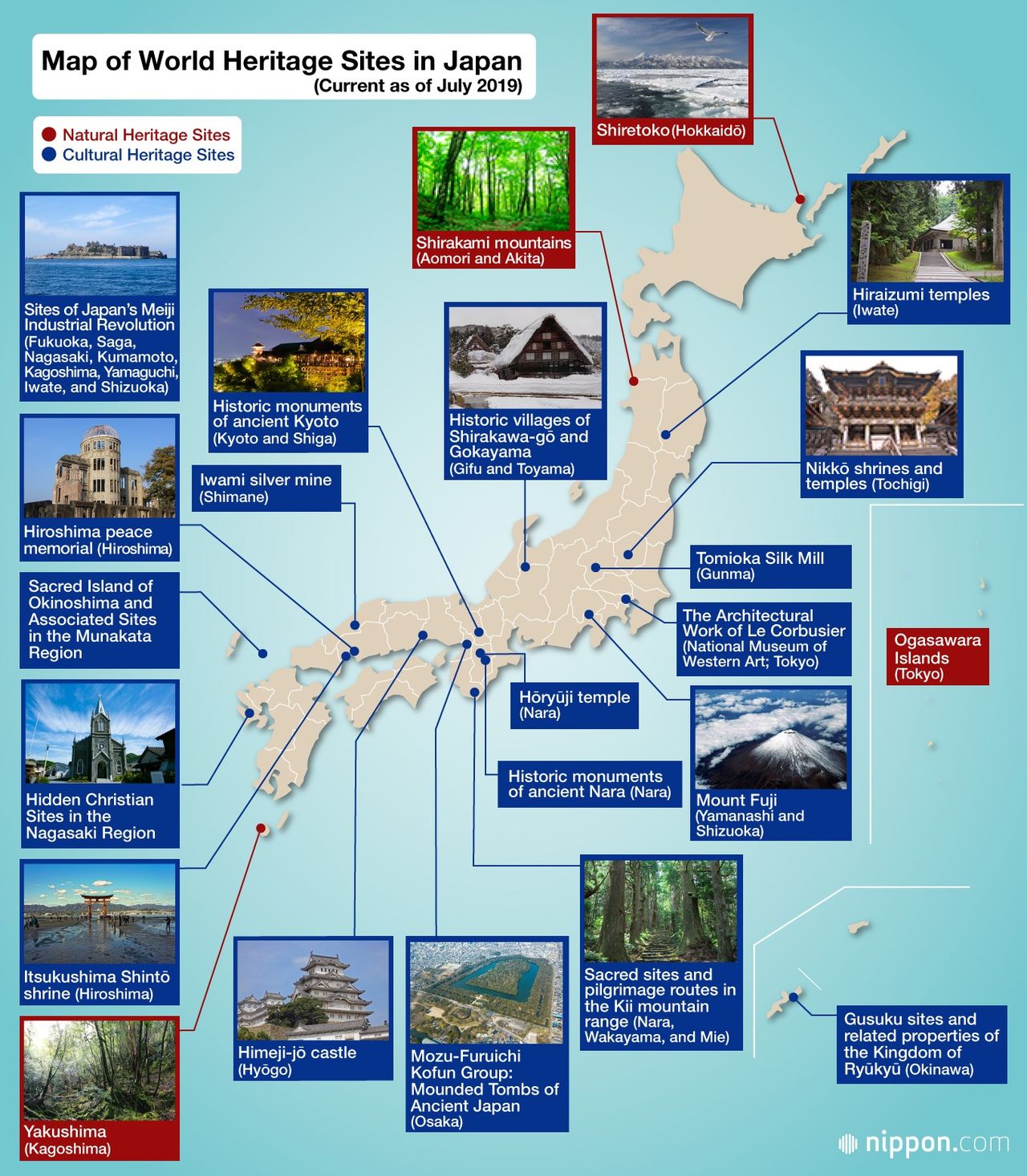
Ancient Burial Mounds Added to UNESCO List: An Overview of World Heritage Sites in Japan
Culture History Guide to Japan Travel Society- English
- 日本語
- 简体字
- 繁體字
- Français
- Español
- العربية
- Русский
Hints at Ancient Traditions and Societal Structures
On July 5, 2019, the World Heritage Committee of UNESCO announced the official registration of the Mozu-Furuichi Kofun Group: Mounded Tombs of Ancient Japan on its World Heritage list. It is the first World Heritage site in Osaka Prefecture.
The 49 burial mounds in the group were constructed from the late fourth to the late fifth centuries and are located in the Mozu area in Sakai and the Furuichi area in the cities of Habikino and Fujiidera. They include the 486-meter long, keyhole-shaped Daisen Kofun—the largest burial mound in Japan—where Emperor Nintoku is said to be buried, and the 425-meter long Konda Gobyōyama Kofun, said to be that of Emperor Ōjin. The Daisen Kofun is also one of the largest burial sites in the world. The International Council on Monuments and Sites, a UNESCO advisory body, noted that “the Mozu-Furuichi Kofun Group in Japan’s Osaka Prefecture demonstrate in an outstanding way the burial traditions and sociopolitical structures of the Kofun period (third to sixth centuries).”
Japan now has 23 World Heritage sites, including its four World Natural Heritage sites.
Related article › A List of World Heritage Sites in Japan
(Originally published in Japanese. Banner photo: A bird’s eye view of the Konda Gobyōyama Kofun burial mound, where Emperor Ōjin is said to be buried. Courtesy Kuroiwa Masakazu and Fujii Kazuyuki, 96Box.)
